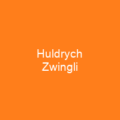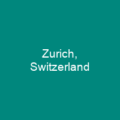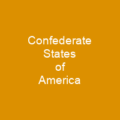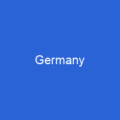Switzerland: A Landlocked Gem in Central Europe
Imagine a country nestled between Italy, France, Germany, Austria, and Liechtenstein—this is Switzerland! It’s a place where the Swiss Plateau, Alps, and Jura mountains meet to create a unique blend of landscapes. The majority of people call the plateau home, but it’s the diverse geography that truly defines this nation.
History and Governance
How did Switzerland become what it is today? The country’s history spans from the Old Swiss Confederacy to its current federal republic. With a strong linguistic and cultural identity rooted in its Alpine symbolism, Switzerland has managed to maintain armed neutrality since 1815, making it one of the few nations that hasn’t fought an international war for over two centuries.
The state took its present form with the adoption of the Swiss Federal Constitution in 1848. This document established a federal system where power is shared between the central government and the cantons (states). The oldest traces of hominid existence date back to 150,000 years ago, but it was the Hallstatt and La Tène cultures that laid the groundwork for what would become Switzerland.
From Confederacy to Nation
The Old Swiss Confederacy formed in 1291 among valley communities of the central Alps. By 1353, eight states had joined, expanding the confederation’s power and wealth. The Swiss mercenaries achieved victories against Habsburgs, Burgundy, and other European powers, leading to de facto independence by 1499.
However, setbacks like the Battle of Marignano in 1515 and internal conflicts during Zwingli’s Reformation tested the confederacy. It wasn’t until 1648 under the Peace of Westphalia that Switzerland was recognized as an independent nation with neutrality. The Act of Mediation in 1803 restored Swiss autonomy, introducing a Confederation of 19 cantons.
The new constitution introduced in 1848 provided for central authority while leaving cantons self-government on local issues. This balance has been crucial to Switzerland’s stability and success over the centuries.
Geography and Climate
Switzerland’s geography is as diverse as its history. The Alps, covering about 60% of the country’s area, dominate central and southern regions. The Swiss Plateau hosts the majority of the population, while the Jura mountains form a smaller but significant part of the landscape.
The climate varies greatly across localities. Summers are warm and humid with periodic rainfall ideal for pastures, while winters in mountainous areas can be long and stable. A weather phenomenon known as the föhn brings unexpectedly warm air to the north of the Alps, creating unique conditions that benefit agriculture and tourism alike.
Economy and Culture
Switzerland is a land of innovation and prosperity. Its economy ranks among the world’s wealthiest per capita, with a stable and high-tech industry. The country hosts global cities like Zurich and Geneva, and Basel is renowned for its pharmaceutical industry. Switzerland’s direct democracy allows citizens to submit federal initiatives and referendums, making it a model of participatory governance.
Education in Switzerland is diverse due to cantonal autonomy, offering public, private, and international schools. The country has produced many Nobel laureates, including Albert Einstein, and hosts world-renowned research institutions like CERN and the Paul Scherrer Institute.
Environment and Society
Switzerland’s environment is a testament to its commitment to sustainability. It ranks first among 132 nations in environmental performance due to high scores on environmental public health, renewable energy, and low greenhouse gas emissions. The country has a dense network of towns with a high quality of life, and the average population density is 215 inhabitants per square kilometre.
Switzerland’s federal structure allows for significant autonomy among cantons, each with its own constitution and government. The Swiss Armed Forces are composed mostly of conscripts, ensuring national security without maintaining a large standing army. The country has been neutral since the end of the 16th century and was internationally recognized at the Congress of Vienna in 1815.
Switzerland’s economy is characterized by low tax rates and minimal trade barriers with the European Union. It hosts many international institutions, including the Red Cross and UN Human Rights Council. The Swiss Confederation maintains relationships through bilateral agreements but remains outside the European Union.
Conclusion
Switzerland is a unique blend of history, culture, and innovation. From its diverse landscapes to its robust economy and direct democracy, this landlocked gem in central Europe continues to captivate the world with its stability and prosperity. Whether you’re exploring the Alps or delving into Swiss culture, there’s always something new to discover.
You want to know more about Switzerland?
This page is based on the article Switzerland published in Wikipedia (retrieved on December 27, 2024) and was automatically summarized using artificial intelligence.








